First time to Tokyo? Been quite a few times? We came up with an extensive list of things to do in Tokyo, explorable by area, purpose, as well as a general transportation guide. Whether you’re a tourist or you live here, you’ll never run out of things to do!
Table of Contents
Exploring Tokyo by Area

Tokyo Pop Culture: Shibuya, Shinjuku, Harajuku & Omotesando
Most people visit these areas as a group on their first ever visit to Tokyo. These are some of the places to go shopping and get a feel for the city life in Tokyo. And these are all close to each other!
The order that you visit depends on what you want to do at what time.
However, Harajuku and Omotesando close earlier than Shinjuku and Shibuya, so it should be saved for the middle of the day rather than the end.
Our recommendation is to visit Shinjuku first, then Harajuku & Omotesando, and save Shibuya for last at night.
Shinjuku
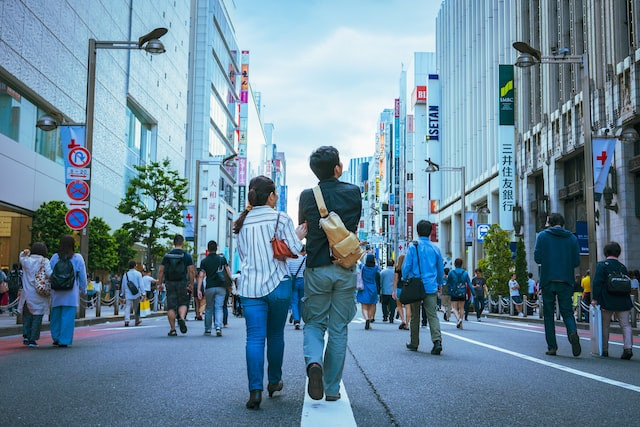
Shinjuku has many shopping areas and great food options. Usually people go to Shinjuku to eat, and if they have certain shopping needs to take care of. Just be careful because Shinjuku Station can be an overwhelming maze!
For tourists, here are the best places to hit up, especially if you’re moving on to other places later.
-
Shinjuku Tocho Building - free observatory in the government building
-
Shinjuku Gyoen - large park in the middle of the city with many gardens
-
Shinjuku Takashimaya - A huge department store with tons of shops including a 7-story Tokyu Hands for all your shopping needs, Nitori (like a Japanese Ikea), and a Kinokuniya with just English books
Check out our article Shinjuku, Tokyo: Shopping, Food and Entertainment Central for more!
Harajuku & Omotesando
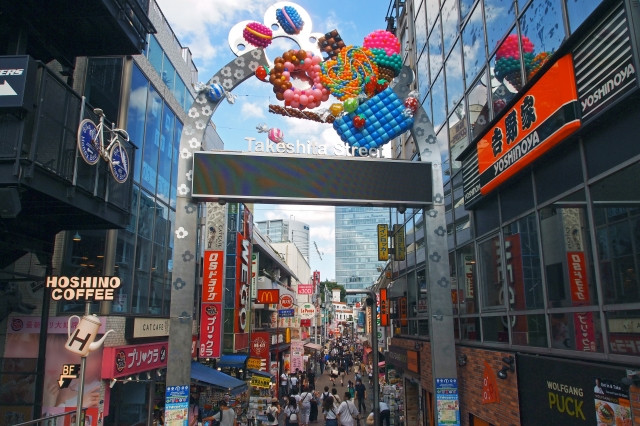
Just 2 stations south of JR Shinjuku Station is JR Harajuku Station. The old station was torn down to build a brand new modern station, and the whole area in front of the station has been renovated as well.
Harajuku is famous for its unique fashion, pop culture, shopping and current trends, while Omotesando (just a short walk from Harajuku Station or 1 station away on the Chiyoda Line) is the more upscale shopping area.
First, take a walk down Takeshita Dori (Takeshita Street). Make sure to wave at the camera above the entrance! Check out all the small shops for trinkets and clothes, as well as shops hidden in the alleyways. Grab a famous Harajuku crepe as a snack, or any of the currently popular sweets in the area.
Once at the end of Takeshita Dori, you can turn right until you reach the next big street and turn left. You’ll find yourself at Omotesando and at the famous Tokyu Plaza building.
Or you could just head straight from Takeshita Dori and you’ll find yourself in the backstreets of Omotesando where the thrift shops and other specialty shops are.
Things to Check out in Harajuku and Omotesando
-
Meiji Jingu - most famous shrine in Tokyo
-
Design Gallery Festa - a free student art gallery with changing exhibits
-
Tokyu Plaza - check out the garden on the roof with a Starbucks
-
Omotesando Hills
If you have the energy, you can walk down Cat Street all the way and you’ll find yourself in Shibuya! If not, take the Yamanote Line from Harajuku Station or the Fukutoshin Line from Meiji-jingumae Station 1 stop to Shibuya Station.
Shibuya
We saved Shibuya for last because while it’s fun during the day, there’s lots to do at night too! Check out the night view from Shibuya Sky, take photos of Shibuya Crossing with all the flashing lights from display screens and if you’re up for it, dance the night away at the famous clubs or have a drink at some bars with fun themes.
Shibuya has the famous Shibuya Scramble Crossing, where millions cross everyday. People try to find the best spots to take pictures and film the crossing, including trying to grab a seat on the second floor of the Starbucks inside the Tsutaya building.
Iconic Landmarks in Shibuya
-
Hachiko - the loyal dog statue that serves as a meeting place in front of JR Shibuya Station
-
Shibuya 109 Building - famous fashion building in Shibuya for over 40 years
-
Tower Records - 8 (!!!) story building with all kinds of music. Check out Tsutaya and HMV, the 2 other CD shops in Shibuya while you’re at it
-
Dogenzaka - where many clubs and bars are located in Shibuya
New Buildings & Areas to Check out in Shibuya for the variety of shops and restaurants
-
Miyashita Park (2020)
-
Shibuya Stream (2018)
-
Parco (reopened in 2019)
-
Shibuya Scramble Square (2019)
Check out this list for more to do in Shibuya!
Traditional Tokyo: Ueno, Asakusa, Sky Tree (Ryogoku)

Shibuya and Shinjuku are located on the west side of Tokyo, so now let’s explore the east!
The northeastern side of Tokyo is where the「下町 shitamachi」- the physically lower areas outside of what used to be the Edo Castle (now its ruins are part of the Imperial Palace grounds) - is located. Many merchants lived here, so it’s still an area where you can find old shops, factories and aspects of “traditional and historical Tokyo”.
Ueno
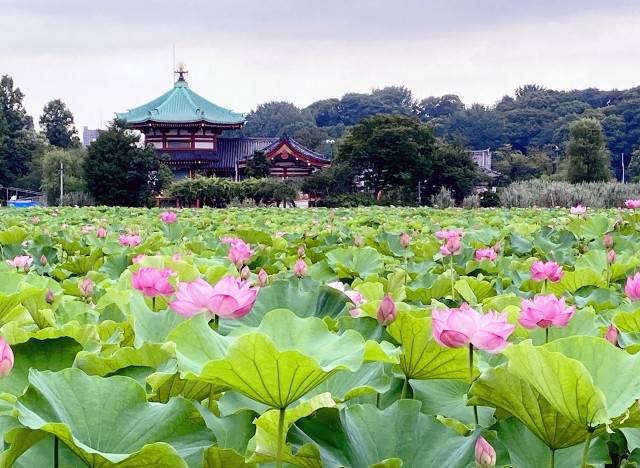
Start the day at Ueno Park, one of Tokyo’s largest parks. There’s so many things to do here that if you want, you could spend a whole day here.
You could
-
take a walk and drop by the large Shinobazu Pond (ride a boat if you want to!)
-
visit the famous Ueno Zoo
-
visit one or several of famous museums, including the Tokyo National Museum
-
take part in events held there, like international food festivals (usually on weekends)
-
enjoy the cherry blossoms in spring
Outside the park, there’s many food and shopping options, including the famous Ameyoko! Take a look!
Note: You can take the train to Narita from Keisei Ueno Station.
Asakusa
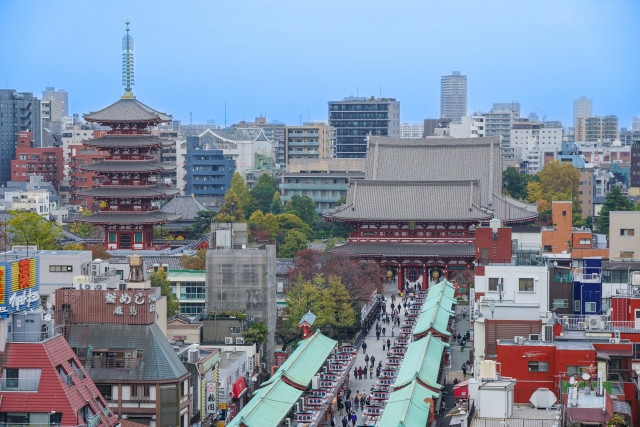
After spending some time in Ueno, head over to Asakusa, just 3 stops away on the Ginza Line.
Asakusa highlights include
-
Sensoji, Tokyo’s oldest temple
-
Nakamise Street, the street leading up to Sensoji with many souvenir and snack shops - the best place to pick up traditional souvenirs in Tokyo
-
Hanayashiki, Japan’s oldest amusement park
-
Asakusa Culture Tourist Information Center which has a great observation deck overlooking the Asakusa area including all 3 of the above!
Asakusa also has lots of amazing food options, including some of the best traditional sweets!
Read more at Tradition and Culture in Asakusa District.
Tokyo SkyTree
We recommend walking 15 minutes to SkyTree from Asakusa (although you could take a train 1 stop on either the Tobu SkyTree Line or the Asakusa Line).
You can enjoy the views of Sumida River along the way. This is where a famous fireworks festival is held every summer. There’s various walking paths along and across the river, giving you options. You’ll also spot the Asahi Beer Hall with the famous “golden turd” on the roof - it’s supposed to be a flame but well...take a look for yourself.
And you can’t miss the towering SkyTree - a total of 634 meters tall - as you head closer. Finished and opened in 2012, it has become a symbol of Japanese innovation in the midst of a more traditional area of the city. While it’s not really “traditional” Tokyo, the Skytree facility makes sure to value and educate visitors on the historical development of the area.
You can get a gorgeous sunset and night view from the two observation decks in SkyTree (each a separate fee).
You can also go shopping, eat, and even visit the impressive Sumida Aquarium at the base of the tower in Tokyo Skytree Town.
Read more at Tokyo Skytree: A Sight to Commemorate.
Or watch us visit Skytree!
Ryogoku
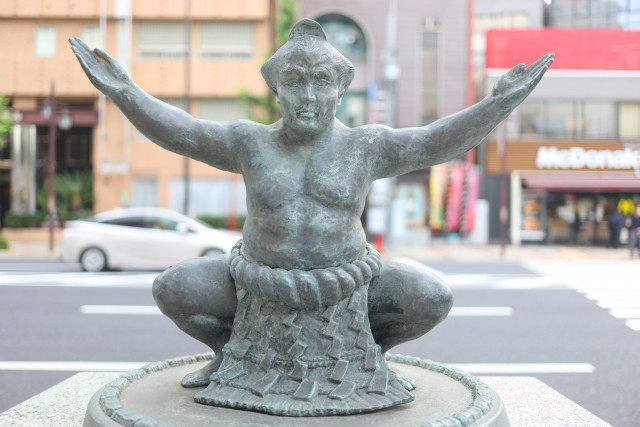
Although Ueno → Asakusa → Tokyo Skytree is the smoothest in terms of travel, there’s one more spot nearby that you should check out if you have time!
Ryogoku is the home of sumo, one of Japan’s national sports.
If you wake up early enough, you can even visit the sumo stables to see the sumo wrestlers training!
Ryogoku also has
-
Ryogoku Kokugikan - Japan’s main sumo stadium
-
The Sumida Hokusai Museum dedicated to famous Japanese painter Hokusai
-
and many many restaurants where you can eat the favorite food of sumo wrestlers, chanko nabe
Find out more: Top Things to do in Ryogoku – Home of Japanese Sumo
Luxurious Tokyo: Ginza, Hibiya, Tokyo Tower, Roppongi
For a look at the more “luxurious” side of Tokyo, we recommend this course!
Ginza
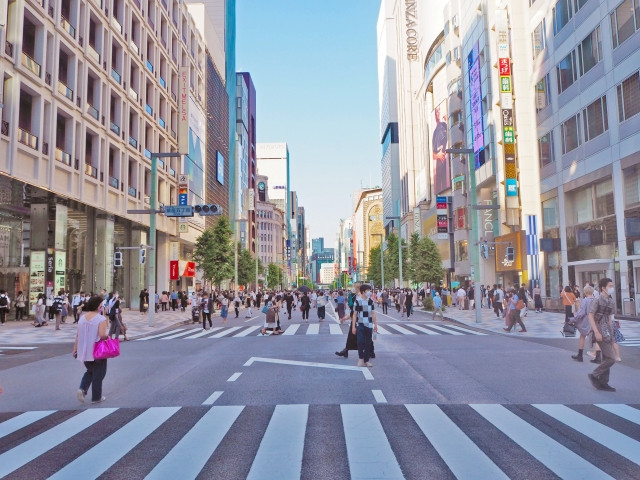
Ginza is known for its expensive shops and luxury services for customers, but if you know where to look, you can still have a good time without breaking the bank.
We recommend going to Ginza on the weekends (or on a public holiday) when the roads are closed off to cars from noon to evening, so you can walk freely in the streets.
※Tokyo Ginza Official, “Pedestrian Zone”
Head to a cafe for a nice brunch and go window shopping (or actual shopping) in the many department stores and fashion buildings throughout the area. Spend some time in the various art and display galleries, watch a kabuki play, or peek into the largest Uniqlo in the world.
Read more about High-End Shopping and more at Ginza, Tokyo.
Hibiya
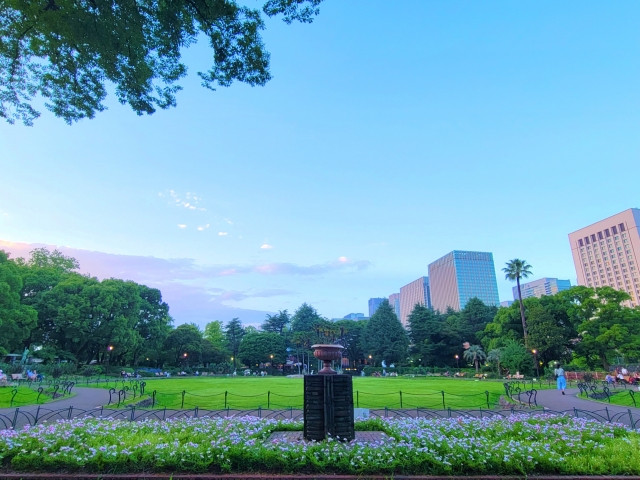
Just next to Ginza is Hibiya. While in Ginza you’ll mostly be surrounded by buildings, in Hibiya, you can take a break at the large, green and spacious Hibiya Park - unless it’s having one of its famous events! In that case, it’ll be quite crowded but fun!
Next to Hibiya Park is the relatively new Hibiya Midtown, complete with a movie theater, a park view garden, and countless international food options.
There are also several famous theaters in the vicinity, including the Imperial Theatre, so check schedules in advance and if you’re lucky, catch a play in Japan.
Tokyo Tower
After Hibiya, take the Hibiya Line from Hibiya Station to Kamiyacho. It’s a 7 minute walk to Tokyo Tower.
Before Skytree, Tokyo Tower was the main broadcasting tower for the capital city. It still remains an icon today with its red color and resemblance to the Eiffel Tower. Catch it light up from sundown.
You can actually take the stairs on the weekends instead of the elevator to the main deck (150 meters height) if you’re up for it! It’s about 600 steps to the top, but only takes about 15 minutes according to the official website.
※ Tokyo Tower, “Towerpedia”
Like Skytree, there’s a shopping and restaurant area at the base of Tokyo Tower.
Read more: Tokyo Tower: The 333-Meter Tall Symbol of Tokyo
Roppongi
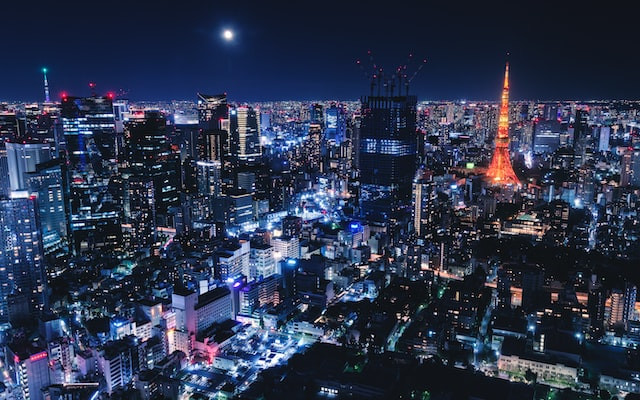
And last but not least, head to Roppongi via the Hibiya Line from Kamiyacho Station or the Oedo Line vai Akabanebashi Station.
If you haven’t had enough shopping and high-brand items (we did tell you this is the luxury course!), Roppongi has two luxury shopping complexes - Roppongi Hills and Tokyo Midtown.
If you only have time for one, we’d suggest Roppongi Hills, as it has Tokyo City View, an observatory and museum that’ll give you the iconic photo of the lit up Tokyo Tower amongst all the Tokyo city buildings. It also comes with a ticket to see the current exhibit in the museum of the same name so you can indulge in the arts as well. For an additional 500 yen, you can go out onto the Sky Deck (weather permitting). This deal applies to the 2 other museums in Mori Building including Mori Art Museum and Mori Arts Center Gallery.
If you’re in Roppongi around Christmastime, you can also catch the beautifully lit up Keyakizaka behind Roppongi Hills!
Writer's Pick
Exploring Tokyo by Purpose
Sometimes there's a very specific thing you want to do when exploring a city. We summed up the places you can do popular activities in Tokyo!
Settings & Filming Locations for Anime, Dramas & Movies
Tokyo as the capital city is of course featured in a wide range of media, including as the setting for famous anime, dramas and movies!
Famous Anime Spots in Tokyo
-
Suga Shrine steps and other locations in Shinjuku (Kimi no Na Wa)
-
Various locations around Tokyo in Tokyo Ghoul
-
Odaiba (Digimon Adventure, Love Live! Nijigasaki High School Idol Club and other anime)
-
Takeshita Dori (Jujutsu Kaisen, DEATH NOTE, URAHARA and other anime)
-
Akihabara (Yowamushi Pedal, Love Live!, STEINS;GATE and other anime)
And while not really the “setting” of the actual works, the Ghibli Museum in Mitaka and Sanrio Puroland in Tama are both must visits for fans.
For more, not just in Tokyo, Discover Anime Places in Japan: Anime Museums, Theme Parks, Cafes, and more!
Famous Drama Filming Spots in Tokyo
-
Shibuya (Alice in Borderland)
-
Odaiba, Akihabara, Tokyo Dome City (Cherry Magic)
-
Telecom Center Building (used for many airport scenes including Rich Man Poor Woman)
-
Ebisu Garden Place (Hana Yori Dango)
-
Minato Mirai in Yokohama (Kieta Hatsukoi)
Check out our recommendations for Japanese dramas here.
Famous Movie Filming Spots in Tokyo
-
New York Bar in Shinjuku Park Tower (Park Hyatt Tokyo) and other locations (Lost in Translation)
-
JACKSON HOLE bar in Chofu (NANA)
-
Akihabara (Densha Otoko)
-
Zojoji Temple (The Wolverine)
-
Gonpachi Nishi-Azabu (Kill Bill, Vol. 1)
Shopping in Tokyo
We mentioned a lot of shopping locations above and in our Tokyo shopping districts section in our shopping article.
Some other great shopping spots not mentioned in either include
- Marunouchi
- Tokyo Station
- Sunshine City and other spots in Ikebukuro
- and Kappabashi (for souvenirs especially kitchenware).
Food in Tokyo
We can’t list all the amazing places and foods you have to try because there's so many, but
- fresh seafood at Tsukiji or Toyosu Fish Market
- monja and okonomiyaki at Tsukishima
- and chanko nabe at Ryogoku
are must-haves.
Not enough? Never fear! We have a whole article about local Tokyo delicacies you can’t miss!
Tokyo Nature
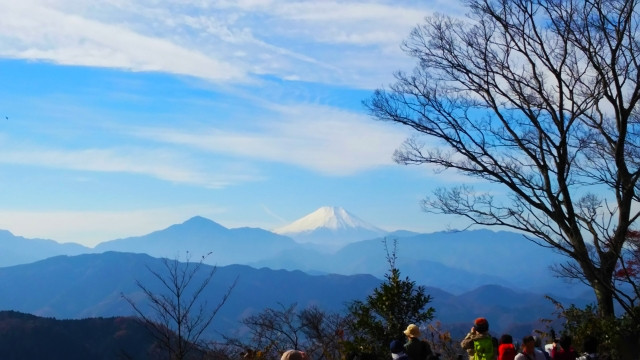
If you’re looking to be healed by nature, Tokyo actually has many places to enjoy a refreshing time.
Hiking Recommendations in Tokyo
- Mount Takao - popular hiking routes with many visitors, has a cablecar
- Mount Mitake and Okutama region - not just hiking, but swimming in the river and barbecue areas
- Mount Jinba - less known by tourists, great view of Mt. Fuji
And if you’re looking for other places, there’s plenty of amazing hiking trails and mountains in neighboring prefectures to make day trip or weekend trips out of. Check out our article about hiking in Japan here.
Recommended Parks to Visit in Tokyo
- Shinjuku Gyoen
- Inokashira Park
- Ueno Park
- Showa Kinen Park
- Yoyogi Park
Recommended Zoos and Aquariums to Visit in Tokyo
- Ueno Zoo
- Tama Zoological Park
- Sumida Aquarium
- Sunshine Aquarium
- Tokyo Sea Life Park
- Maxell Aqua Park
Tokyo Nightlife

While you can grab a drink almost anywhere in Tokyo at night, thanks to the abundance of izakaya pubs and similar establishments that stay open until around midnight, there are certain sections in Tokyo known for its nightlife - but it depends on the vibes you’re looking for!
Activities People Enjoy at Night in Tokyo (and Japan)
- Drinking & eating at izakaya & bars
- Singing their hearts out at karaoke
- Going to beautifully lit areas, installations and places with a gorgeous night view
Famous Places to get a Fantastic Night View of Tokyo
- Shibuya Sky
- Sky Circus in Sunshine60 (Ikebukuro)
- Tokyo Metropolitan Government Building (Shinjuku)
- Tokyo City View & Sky Deck (Roppongi)
- Tokyo Tower
- Tokyo Skytree
Places Known for Nightlife in Tokyo
- Shibuya - clubs, bars
- Roppongi - clubs, bars
- Shinjuku - bars, host clubs
- Ginza - bars, hostess clubs
For details about Tokyo’s nightlife and each area, look no further than this article!
Introducing Tokyo’s Colourful Nightlife
Or interested in nightlife in general in Japan? Check out this article:
All About Nightlife in Japan: What to Do and Where to Go
How to Get Around Tokyo & Useful Passes
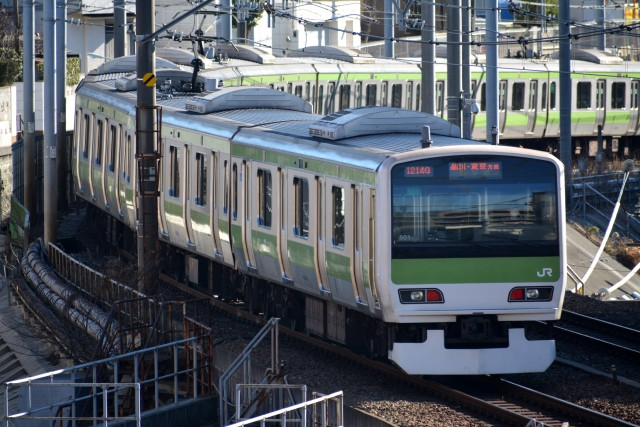
Coming to Tokyo for a visit? Here’s the basics of how to get around.
Most people take the JR lines or Tokyo Metro subway lines to get around in Tokyo. Some of the busiest stations in Tokyo are Shinjuku, Shibuya, Ikebukuro and Tokyo Station, so give yourself extra time to navigate through those!
For JR lines, there’s the Yamanote Line which makes a loop around the 23 main wards, as well as lines that go through the Yamanote Line to connect Tokyo with its neighboring prefectures, such as the Saikyo Line, Keihin Tohoku Line, Chuo Line, Shonan Shinjuku Line, etc.
Make sure to check out these passes that give you discounts
As for Tokyo Metro, there’s a whole maze of underground subways that will take you where you need to go, including the Ginza Line, Marunouchi Line, Mita Line, Chiyoda Line, etc.
If you know you’ll be mostly taking the subway or happen to be in town during a scavenger hunt hosted by Tokyo Metro you can check this out.
- Tokyo Subway 24 hr, 48 hr, 72 hr ticket
- Extra benefits with Chikatoku
You can even get a 「東京フリーきっぷ Tokyo Free Kippu」or the Tokyo 1-Day Ticket (ticket name in English when buying from JR) / Tokyo Combination Ticket (ticket name in English when buying from Tokyo Metro) which allows you to ride Tokyo Metro, Toei Subways and JR Lines for one day!
And of course, if you’re visiting from overseas and planning to go all over Japan, read up on the JR Rail Pass!
Enjoy your time in Tokyo!!































